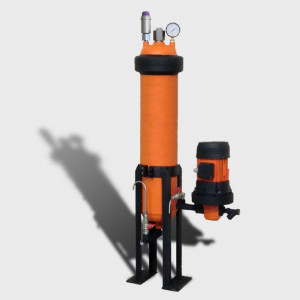| Behin Palaye Sharif |

| Registration Date | 6 Jan 2020 |
| Revision Date | 6 Jan 2020 |
| Share |
Environment Air Remediation
Turbine oil filterPressure drop close to that of paper filters Absorbing water, varnish and oxidation compounds Chemical resistance to organic solvents, weak acids Price reduction
Turbine oil is a circulating lubricant that performs tasks including lubrication of bearings, gears and couplings, heat transfer and cooling in bearings, improved hydraulic performance, and protection against rust and wear. Varnish is caused by insoluble and sometimes organic solution particles such as adherent oxides and carbonaceous materials in the oil. As the oil temperature drops below 50 ° C and the precipitation of these insoluble and soluble particles, brown precipitates are formed which are hard and thin called varnish. Some surfaces are varnish-prone, such as cold surfaces, and where the oil flux is low. Varnish in the oil causes clogging of the filter, contamination of the new oil, poor heat transfer in the oil cooler, increase in temperature of the turbine bearings and resistance to recirculating oil flow and oil leakage. Filtering or preventing contaminants are used to control oil quality. The filters are available in both deep and surface type. Depth filtration typified by multiple porous layers with depth are used to capture the solid contaminants from the liquid phase. Introduction of Nano-technology to filter industry is the most recent evolution in this field. Deep cellulose filters are among the conventional filters in turbine oil refining that the presence of nanofibers in these filters improves varnish removing efficiency. As existing filters are made of paper, the cellulose filter also saves paper.
Using nanofibers in fabrication of turbine oil, improves the ability to remove varnish and absorbing contamination in comparison to paper type filters.
According to the national standard number 80004-2, this product contains nanofiber and is eligible for being placed in the field of nanotechnology.
Membrane Patch colorimetric (MPC) test was used to evaluate the product's ability to remove varnish. After passing clean and contaminated oil separately from two separate filters, and washing the filters, the amount of discoloration was determined by ΔE. If this value is less than 15, it is appropriate.